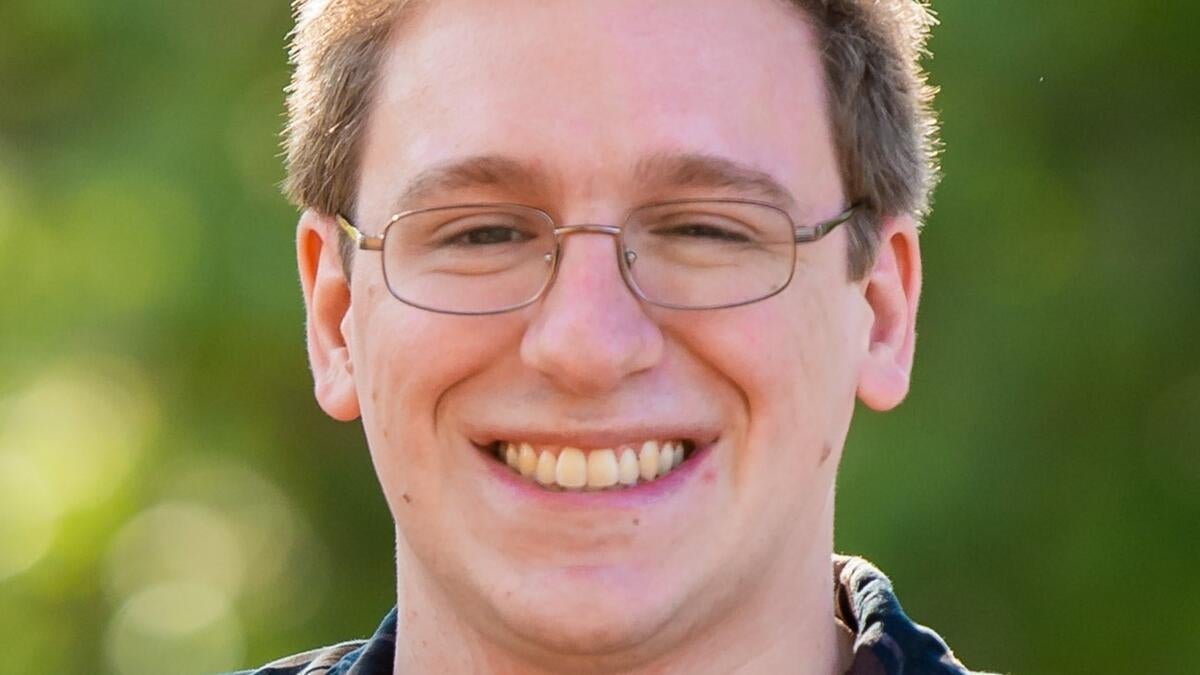Path to PhD started with a small planetarium and an intro astronomy course

PhD graduate Greg Vance.
Editor's note: This story is part of a series of profiles of notable fall 2021 graduates.
In his junior year of high school in Nashua, New Hampshire, Greg Vance enrolled in an introductory astronomy class that captured his imagination. While learning the night sky from his high school’s small planetarium, his physics teacher pointed out that studying astronomy required a lot of the same knowledge covered in physics class.
Since then, Vance earned his bachelor’s degree from Connecticut College in physics and mathematics with a minor in astronomy in 2015. This December, Vance will graduate with a PhD in astrophysics from the School of Earth and Space Exploration.
The decision to attend ASU was partially based on Vance’s parents and brother moving to the Phoenix area in pursuit of warmer weather, drawing him to Tempe. Having his family nearby and not having to shovel snow anymore was certainly appealing. But the cross-disciplinary environment of ASU also had strong appeal.
“The interdisciplinary nature of the School of Earth and Space Exploration made it feel like a unique and interesting place to pursue a PhD in astrophysics, in contrast to the standard physics or astronomy departments at most universities,” said Vance. “I was intrigued by the supernova simulation research of Professor Patrick Young, who eventually became my PhD adviser.”
In the six-plus years working together with Young, Vance learned how to apply programming skills to solve research problems, how to ask big scientific questions, and how to write scholarly journal papers.
“But the most important lesson,” says Vance, “is that he taught me how to be patient and understanding, not only with others, but also with myself.”
Young said, “Greg embraced the spirit of our school by extending his work on supernovae from simulations to observational messengers ranging from elusive subatomic particles to meteoritic grains of dust predating our solar system, solving some stubborn scientific problems on the way.”
During his studies at ASU, Vance was awarded the Summer Exploration Graduate Fellowship and the Graduate College Completion Fellowship as an outstanding graduate student. After graduation, Vance would like to work in data science or software development or may consider positions providing software support for researchers.
Vance shared a few thoughts about his time at ASU.
Question: What’s something you learned while at ASU — in the classroom or otherwise — that surprised you or changed your perspective?
Answer: In the classroom, I was surprised to learn that computer programming was a much larger part of modern astrophysics than much of my past education had led me to believe. It's not just equations on blackboards. Numerical computing and scientific visualization are important skills for making sense of large datasets, too. Outside the classroom, I was surprised to learn just how many professional astronomers aren't night owls. I'm a decently nocturnal person, but the school’s astronomy classes for grad students are all at 9 or 10 a.m., while the graduate geology classes are in the afternoon!
Q: What’s the best piece of advice you’d give to those still in school?
A: Make sure to pause along the way to help others, especially when you're feeling ahead. One day, when you're really falling behind, you'll appreciate the people who stop and make time to help you out. Otherwise, just keep your goals straight. Make sure you know why you're doing what you're doing and where you're going with it, instead of just doing it because you're doing it.
Q: What was your favorite spot on campus, whether for studying, meeting friends or just thinking about life?
A: I like to eat lunch sitting on the north-facing balcony on the side of the College Avenue Commons building. It's a great spot to stay in the shade and watch the planes fly past "A" Mountain on their way to Sky Harbor Airport.
Q: If someone gave you $40 million to solve one problem on our planet, what would you tackle?
A: Many of the biggest problems in today's world are deep social issues like racism and poverty, and I'm sure that motivated people in nonprofit organizations dedicated to fighting these problems could do a lot of good with a $40 million charitable donation. If I'm tackling the problem myself, I think my skills mean that I'm best equipped to address something like climate change. Investing in renewable energies, developing carbon-capture technology and scouring data to find more sustainable and efficient ways to solve problems — these are the moves we have to make as a species to prevent catastrophe occurring within my lifetime.
More Science and technology

Will this antibiotic work? ASU scientists develop rapid bacterial tests
Bacteria multiply at an astonishing rate, sometimes doubling in number in under four minutes. Imagine a doctor faced with a…

ASU researcher part of team discovering ways to fight drug-resistant bacteria
A new study published in the Science Advances journal featuring Arizona State University researchers has found…

ASU student researchers get early, hands-on experience in engineering research
Using computer science to aid endangered species reintroduction, enhance software engineering education and improve semiconductor…